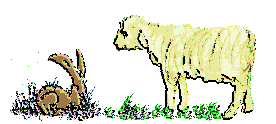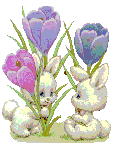
Easter, in the Christian religion,
is the resurrection of Jesus Christ from his tomb on Earth. Specifically,
in the Catholic religion, Ash Wednesday begins the period of time where
one examines themselves and their relationship with God. This is
the start of Lent, also known as the 40 days Christ went into the desert
to fast. Easter week is known as the Tridium and it has Passion Thursday...
night of the last supper and betrayal. Good Friday is the day of
Christ's crucifixion, then Holy Saturday, and finally Easter Sunday, the
day Christ's body and spirit joined together to walk the Earth again.

In many western European coutries,
they have Easter Fires, which are huge bonfires on the hilltops on Easter
Eve (Holy Saturday). However, this practice predates Christianity.
It began as the welcoming of spring and birth. There are direct correclations
to the Goddess of Sprin and the name of this holiday. The Goddess
was known as Eastre, Eostre, or Ostara. She is the symbol of fertility
(the hare) and the egg of creation. Easter is placed on the first
Sunday following the first full moon, the Vernal Equinox

In Germany, the hare (osterhase),
also known as the Easter bunny, is a prominent figure and symbol of the
birth of spring. They have celebrations with hand-painted eggs, marzipan,
and other German candies. It is a time to spend with the children
and delight in their youth and life. In German homes, there is "spring
cleaning" and then they decorate their home with the first sprouts of spring
in a earthen pot.

One tradition found in some villages
of Germany is the trading of eggs. These eggs are hand-painted with
elaborate designs that have been passes down through the generations.
Some places observe the custom where young girls give their suitors a red-painted
egg.

Links:
Ostern/Easter
Easter
around the World
Celebrating
Around the World
Oster-Special
Some
Easter Stories
Wilkommen
auf dem Osterspecial
Ostern
And some fun games in German:
Easter
Games